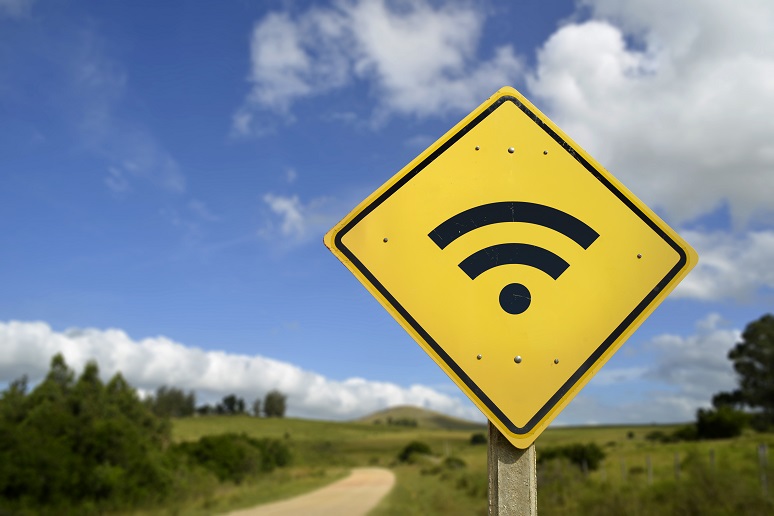One telecommunications and infrastructure issue that the pandemic brought into clear focus was the uneven availability of broadband Internet access for consumers and small businesses. When the work-from-home (WFH) orders went out in March, residential broadband was put to the test. Office workers who lived in mid-to-large-size cities and their developed suburbs generally made out well. But for those that worked or lived in rural areas, that was a different story.
The problem of limited broadband coverage in rural areas has not gone unnoticed, and the
FCC’s Rural Digital Opportunity Fund (RDOF) is trying to address this problem. The initial $20.4 billion fund was set up in 2019, with the plan of auctioning off grants to service providers who presented viable proposals to deliver reasonably priced, high-capacity Internet access to unserved communities. The process slowed down because neither the FCC nor anyone else had a real exact picture of where broadband access was or wasn’t available.
They have apparently worked that issue out to everyone’s satisfaction, and the FCC has now announced the first $9.23 billion in grants awarded to 180 out of 400 qualified bidders. An additional $6.8 billion is being held in reserve for future auctions. FCC Chairman Ajit Pai called the RDOF auction “the single largest step ever taken to bridge the digital divide and is another key success for the Commission in its ongoing commitment to universal service.”
Who Got What?
The FCC put together a highly detailed set of requirements and qualifications for bidders and a set of performance tiers to provide a standard basis for comparison. In the end, the list of winners didn't just include large incumbents. Maybe, the FCC figured those guys had decades to do something about this and have consistently come up short, so it’s time to give the upstarts a shot.
The single largest winner was fixed wireless provider LTD Broadband from Las Vegas, who won $1.3 billion to serve 500,000 homes. LTD Broadband was founded in 2011, and its service area covers roughly 40,000 square miles in Iowa, Minnesota, Nebraska, and South Dakota.
Charter Communications won $1.2 billion to serve locations in 24 states, and a consortium of rural electric companies won $1.1 billion. Elon Musk’s SpaceX was awarded $886 million for his Starlink service to serve locations in 35 states.
While we should always be skeptical of government agencies placing bets on emerging technologies (which is essentially what the auction process does), they seem to be spreading the money around between known solutions like fixed wireless and cable modem providers, but they are also taking a something of a “flyer” on Starlink’s largely unproven satellite constellation.
What’s the Best Way to Do This?
The drive to expand conveniences like telephones and electric lights beyond cities and towns to rural areas has been going on since early in the last century. A big part of AT&T’s early strategy in expanding its network nationwide was to overcharge customers in large markets to subsidize customers in smaller, less profitable markets. This was all done with the full cooperation of the regulatory authorities, who saw this as “serving the public good.”
In those more paternalistic times, English philosopher John Stuart Mill’s concept of
the natural monopoly held sway, and companies and regulators worked hand-in-hand to serve what they all felt to be the common good — it’s almost like a Jimmy Stewart movie. Paternalism has worn away over time, and technical advances have moved the goalposts as the needs expanded beyond electric lights and basic telephone service to broadband Internet.
Even with the new competitive environment, the government recognized the challenge of maintaining cost-effective telephone service for rural areas. To that end, the FCC established the Universal Service Fund (USF) to effectively do what AT&T had done internally to subsidize rural service in the past.
Still, there were customers in very small, expensive to serve markets that no big provider wanted, but they often got by with whatever unreliable slapdash solution was available.
The barbed wire telephone systems that appeared early in the last century are a prime example of that. The cable TV industry grew out of Community Access Television, a way to improve TV reception in these same underserved areas. Country people are tough-minded, independent people, and they’re not going to sit on their hands while there’s some kind of solution they can string up to make life better.
However, the cruel mathematics of networking works against them: As population density decreases, the cost to serve each subscriber increases. Those costs are obvious when we’re serving customers with physical cables, but it applies to wireless solutions as well. Cell sites cost hundreds of thousands of dollars, and the maximum coverage area is around five miles. However, if you’re not mobile (like fixed wireless), do you really need all the complexity and cost that accompanies a mobile solution? There are
hundreds of small fixed wireless suppliers, and we can find almost none who are using mobile cellular technology.
In the middle of the last decade, a fixed (eventually mobile) wireless technology called WiMAX offered a potential solution. Sprint got behind it with its trove of 2.5 GHz radio spectrum. Neither WiMAX nor the idea of fixed wireless access (FWA) caught on in a big way. With hundreds of small suppliers, supply has not caught up with demand. Sprint’s 2.5 GHz spectrum is now in T-Mobile’s hands, and they’re going to deploy 5G on it.
Fixed wireless seems to be the obvious choice to serve sparsely populated areas, but that too presents challenges. You can increase transmission range in a fixed wireless solution by employing directional antennas; the beamforming capability inherent in 5G NR can accomplish the same end. However, there are still range limits, and geographic features like mountains can make certain portions of the coverage area inaccessible.
There has been talk of using 5G for FWA applications, but it’s unclear whether they’re talking about supporting FWA users on the readily available mobile cellular data service or developing something using 5G radio technology but actually designed to optimize a fixed-location requirement. Many of the rural areas we’re looking at barely have cellular coverage today, much less 5G.
Looking Up: Satellite Constellations
I consider satellite constellations a bit of a flyer, as the new generation technology has yet to be tested on a large-scale basis. However, in Oct. of this year, Starlink started its “Better Than Nothing” beta testing for Starlink, which promised user speeds between 50-150 Mbps and latency between 20-40 milliseconds.
Starlink and the other satellite constellations (e.g., OneWeb {Branson} and Kuniper {Amazon}) are adding a new chapter to the low-earth orbit satellite (LEOS) story. Providers like Iridium and Globalstar pioneered that business and do offer limited speed data service (<.5 Mbps). However, those services are really geared towards voice telephone service.
These new satellite offerings use hundreds of low-earth (e.g., 350-750 miles) orbiting satellites to deliver broadband Internet with reasonable latency to every corner of the populated world. If they can consistently deliver on that 50-150 Mbps promise, that would be a big story for sure. If they can do that and make a profit, that would be a much bigger story.
Conclusion
Once technologies take hold, it’s hard to predict where they will be adopted. However, we are constantly on the prowl for new options. Traditionally, that search has focused on solutions for office and other business locations, but with the move to work from home, residential broadband is now officially on our list of concerns.
While the RDOF is a great step, you can really only consider it seed money. The part of this challenge that everyone needs to focus on is the ongoing costs involved in running a network. So, delivering rural broadband isn’t just a question of building it; it’s a matter of operating it as a profitable business for the long run. Business viability (i.e., profits) is essential to providing customer service and support, making repairs, and funding network expansion and upgrades. Not surprisingly, that reality turned out to be the biggest challenge to municipal Wi-Fi initiatives.
Viewed in that light, the RDFO is just another shot at the government’s putting a benevolent thumb on the scale to help get the ball rolling. As Americans embrace work-from-anywhere, Internet access has become central not only to personal communications but to the ability to work and access the centerpiece of modern commerce, learning, and entertainment.
The FCC has placed some bets to jumpstart the process, let’s all hope at least some of them pay off.










